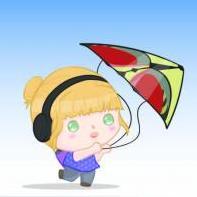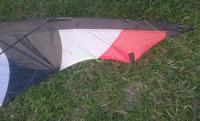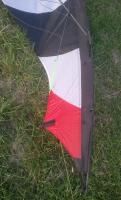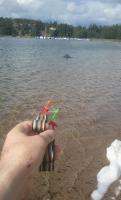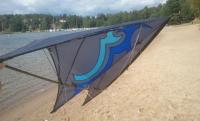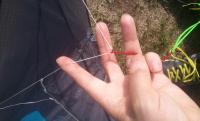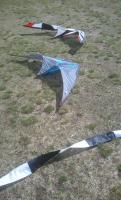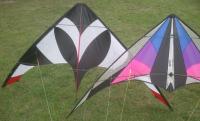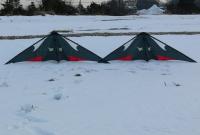Leaderboard
-
in Blog Comments
- All areas
- Marker
- Marker Comments
- Marker Reviews
- Adverts
- Advert Questions
- Advert Reviews
- Articles
- Article Comments
- Article Reviews
- Blog Entries
- Blog Comments
- Files
- File Comments
- File Reviews
- Events
- Event Comments
- Event Reviews
- Images
- Image Comments
- Image Reviews
- Albums
- Album Comments
- Album Reviews
- Topics
- Posts
- Status Updates
- Status Replies
-
All time
-
All time
June 25 2009 - April 25 2024
-
Year
April 25 2023 - April 25 2024
-
Month
March 25 2024 - April 25 2024
-
Week
April 18 2024 - April 25 2024
-
Today
April 25 2024
- Custom Date
-
All time
Popular Content
Showing content with the highest reputation since 06/25/2009 in Blog Comments
-
I finally got a chance to watch your video all the way through. Looked like a nice flying session, and a great location. I think the high point of what I saw was around the 7 minute mark, you flew straight down and did a snap stall to the left, then again to the right. That looked really good. That move can easily be made into an impressive landing, or while the kite is stalled, it's a perfect spot for an axel. The move at the end looked like a turtle, I couldn't see the kite, but your input looked like the input for a turtle. That was my first trick... fly up while pulling on both lines, and right near the top, throw slack at both lines. The kite flips onto it's back... walk towards the kite, tug either the right or the left line, and the kite will rotate around. Boom... Lazy Susan. Once the kite rotates 360*, pull both lines, the kite will return to flying position, fly away. Two things I would suggest... I fly with my pointer fingers on the leaders for fine inputs on either line. This helps greatly during stalls & slides. Inputs when the kite is barely flying are micro inputs. Which brings me to the universal truth... more slack. Almost always, when you wonder why a trick failed, the answer is... more slack. Always walking (or at least a big step) towards the kite when you're trying a trick. Example... 1/2 axel, snap stall towards the side of the window, step forward, axel input to fly out towards the center of the window. If you're like me, the stepping forward is tough while the kite is in the middle of a trick. I kinda lock up out of fear that I'm about to crash. Very difficult to overcome, I'm still working on that. Last thing... patience. I worked on the axel for about a year before I really got it. It took me over a year to learn the 540. I know that I'm slow, but I didn't have anything but written advice and some uToob videos to learn from. I would read & watch, over & over, but most of that information would fly out of my head when I got out to the beach. I am happy to see someone else learning dual line, not the most popular, and certainly not the easiest kind of flying. Keep up with the videos, even if you don't post them, watching them in your down time will help you analyze what you're doing (right & wrong) and that will help greatly the next time you're out in the field. Let me leave you with this... and this...5 points
-
The calm before the storm... well, not too calm, the winds were 10-15mph, but they were clean off of the water. My daughter, Bailey (7 years old), wanted to come out and fly her new Butterfly kite. The kids aren't as interested in kites as I am, so I always jump at the chance to fly with them. The Butterfly is made by X-Kites, and is better made than most kid's kites. It did fly well, right out of the box. It's amazing how cold a 70 degree day feels after weeks of hazy, hot & humid 90 degree days. Yay ! Sweatshirt weather ! Bailey also took a turn wrangling the Ultrafoil 15. It seems really big to her, and with any much more wind, would probably lift her off the ground. It was much easier to fly once it was properly lashed down to a convenient piece of driftwood. This is the one kite that I was itching to fly... the Joel Schultz Skyscraper. Yeah... this one's got some pull ! It's a very unique SLK that's going to get flown alot. It flew really well, even if it did make my arms a little longer. 300# line required ! Thanks, RC ! SO, Kite Season 2016 is off to a great start... hoping to get all the kids more involved this year, the other two seemed a little jealous when they saw the pictures. Bailey worked on her dual line skills today with the Snapshot foil. I think she'll be ready soon to fly the hot pink Action Kite that's been hanging from her ceiling since she was a baby. It will be good to see that classic in the air, it's 20-25 years old, but has never been flown !5 points
-
HS... congratulations on your Virtual Freestyle entry. When I first started with VF, my first two entries to VF were rejected... one had too much OOF (out of frame) and the other was just not up to acceptable standards at the time. Congrats on winning a prize, too ! I'm never there to win it, I think it's just fun to stand & fly on the same (virtual) field with the best pilots in the world.4 points
-
Good stuff ! I really like to see someone who has the bug, and is so enthusiastic about learning dual line flying. I get that... been there, for many years. The Fade at the end of the last video stuck with me. That was nice. I like to see how long I can hold a fade, which can seem like a boring exercise, but it really helps to get the 'feel' of the kite. The gentle inputs that a fade teaches you translate directly to the types of inputs need to hold a stall or a slide. 1/2 axels ? It took me forever to learn them, and I still don't know if I do them right. I do a fast snap stall input, but don't let the kite go tips horizontal, but give the axel input quickly after ditching the speed (when the nose is pointed at 10 o'clock or 2 o'clock, depending on which side I'm flying). I choke the axel just as the nose is pointed in the right direction (left or right, horizontal) and quickly take up the slack either with a step back or an arm sweep, or sometimes both if the wind is low. That's the best I can describe it, and like I said, I'm not sure if my 1/2 axels are 'real' 1/2 axels... Was the first video just the I2K, or did I see a different kite in there, too ? Maybe an Ozone at the end ? Different kites are going to be stronger with certain tricks, and I have to say, the I2K is a very difficult kite to trick. I really only like mine with the Spoilerz installed in higher winds. I don't like flying it without in lower winds. As a matter of fact, the I2K is the only high wind duallie that I have in my bag. I have an Alien, too, but we don't get along, and it stays home. I like the music & the creative editing. You've found the exact reason I film my flying, to watch and see what you're doing wrong. Or right, sometimes... Finally, about the weather watching... tell me that you can't drive past a flagpole without looking up to see which way the wind's blowing ?!? 8)4 points
-
OK... day 2. I gotta say, I am totally exhausted. Something about walking around in the sand in the rain all day, I guess. Well, not rain all day, but as the forecast read, it rained 60% of the time. Didn't care, I was there to fly, and even at times when my kite was the only one in the air. But a really good time... it was good to see these faces that I only see once a year, and all the friendly residents of Long Beach Island. They're something else, so welcoming and friendly, just like kite folks. When I woke up, this is what I saw out of my window... these were taken from my balcony. Yeah, I guess I got up late... This is turning into a 'real' kite festival. Even with the grey weather, the turn-out was very impressive. This is only the second year that this festival has been held. These guys had an actual real-deal Buffalo Cody. First time I've seen one of those in person ! Wow, just Wow. I've seen this stack before, it just doesn't get old. So, what could top a stack of Rainbow Revs ? How about a Jimi stack. I got to examine these up close... the intricate sewing was very impressive. Of course, every 'real' kite festival needs a Bol race. I think I need to look into these for my kids, it looks like a good way to tire them out ! Yeah, those again. Did I mention I really like these ? 8) Something different, Dual Line and Quad line mega-fly ! Yup, some dual lines, too. I couldn't identify this kite yesterday, I suspected that it was something kinda rare, but it was confirmed today that these are 'Machines'. Not something you see everyday... and not one, but two !4 points
-
Try a punch turn to quickly change direction 180*. I think I may do a combo turn, but it's more punch heavy. Punch, step forward (lunge), and use the other hand for steering input into the landing. It's all very fast and difficult to dissect. But I think that's how I do that one. When a light kite is stuck on it's back, try pushing forward on both lines, then pull it back out of the turtle. I remember that bugging me about the Shadow, too. The Fade is easier in lighter wind, and more dangerous to the kite in higher winds. If you lose the Fade in higher winds with the nose pointed down, it's only a split second before it turns into a high speed land dart. Lazies can be done without much risk in any wind, but look better in lower wind. I like them to go around slow & graceful, it just looks better to me. Fast yank & spank flying kinda looks like the kite is out of control... Hopefully some of this may be helpful, I enjoyed reading your blog. I would be lucky to fly with someone who has the same enthusiasm as you do, it's nice to talk with someone who speaks the same language... at least I can read about it.4 points
-
Just forget about that 'Sleeping Beauty' launch... don't break your kite. What's the point ? Fade launch is OK, though. I hear you about wanting to concentrate on learning to fly dual lines, but you've got the rest of your life to learn duallies. You'll need at least that long ! The great thing about four lines is that they're easy to learn, and the learning curve is fast. If I'm on a crowded beach, I choose to fly a quad line because of the confidence the kite gives me. I've been trying to learn how to fly dual lines for ~15 years, but still won't fly them in a place where there are a bunch of people hanging out, only when I'm about the only person there. I totally prefer to fly dual line kites, but finding the right winds and conditions can be frustrating. You can put tails on quad line kites, too, BTW...4 points
-
Work on the stationary stall, snap stall... then axel to a stall. A side slide is a stall that moves.... sideways. I frequently practice dual line 'hovering', see how long I can make the dual line kite look like a Rev.4 points
-
The second log dump Session list: Breakthroughs of destruction Low/zero wind session with the 4D in a new park Doing basics and ground work with the Shadow The day of the good looking axles - a surprising light wind success First time with the Hydra and (experimental) flying without intention Conclusions can be found last in this comment/log dump ¤¤¤¤¤¤¤¤¤¤¤¤¤¤¤¤¤¤¤¤¤¤¤¤¤¤¤¤¤¤¤¤¤¤¤¤¤¤¤¤¤¤¤¤¤¤¤ Breakthroughs of destruction Mon Sep 12 12:54:25 CEST 2016 GB forecasted 3-2 Maestro 3, Elixir, Tramontana - all on 20m 40 kg lines Wind was a bit on the harder side first, but then really quickly died out in the evening. It was slightly frustrating, when finished assembling a suitable kite (Elixir) for the new lower wind, it was time to assemble the next kite for yet lower wind. Maestro 3 Initially a bit hard wind with a hint of frame deformation in the gusts. Rock and roll and fun flying. Not much gentle touch here. The maestro 3 had no problem in staying in a turtle, however it didn't lay still in a turtle, but wobbled back and fourth and also changed the pitch of the kite. Doing the Lazy was just a question of waiting to the right moment when the backside of the kite was visible and the kite was (left-right) horisontal and then pull on one line. The beach/lawn is quite smooth and the wind came from the sea - yet the turbulence was there. For the moment I didn't mind the tumbling - it kind of suited the scene - felt wild. However for other moods, is there a way to dampen the random oscillations of the turtles in higher wind? The wind speed went down so I could practice holding fades for a while - were by no means fantastically performed, but it felt good. But everything has an end - a brief glimmer, a reflection of the last direct light from the sun for today, was seen in front of the kite nose. It was the spine that now had made it through the worn out nose and the end-cap had fallen off. Elixir I assembled the next kite for the now lower wind. It was hardly worth it - wind dropped again - next kite! Tramontana Wind continued to drop - too comfortable/too little time left, so I didn't bother with longer line set - stuck to 20m. Time to ponder over the preserved momentum from the turn - can't say I got it. More like managed to make it look not ugly, but the old way of making a 3/4 turn downwards still looked nice (but on the other hand almost all stalls and slides looks good with this kite). I still would like to learn the "speedy slide way" by flinging the kite in the downwards turn (as discussed in the topic http://kitelife.com/forum/topic/7443-trying-to-do-the-side-slide-with-a-two-line-kite/ ) in several places in the wind window. When disassembling the kites I noticed that there were two smaller holes in the Tramontana nose. The end caps of the upper leading edges had fallen off and the edges of the end of the carbon tube had worn two symmetrical holes on either side of the spine. These end-caps were quite short - should they have been longer or just better glued? Two holes in the Tramontana nose. The end caps of the two LEs had fallen off exposing the fabric of the nose to the sharp edges of the carbon tube. ¤¤¤¤¤¤¤¤¤¤¤¤¤¤¤¤¤¤¤¤¤¤¤¤¤¤¤ Low/zero wind session with the 4D in a new park Sat Sep 17 11:15:00 CEST 2016 KG forecasted 1 4D 18' 50# lines The 4D session Me being close to this untested small field/park by the sea was caused by driving my oldest daughter to catch a small ferry to go to town. The lawn of the park was 20m max physical 15m max practical line length. There were a lot of families with children in the park, but the lawn was practically empty (many seemed occupied with building some obstacle path in the steep slope around the lawn). Wind was really a disappointment. The forecast spoke of 1m/s mean and 5m/s in the gusts - ha! The dew was still here and there in the lawn. Releasing relatively dry seeds of an dandelion gave a wind speed of about 0.3m/s (and at one measurement they just fell straight down). Remembering my previous attempts with the 4D in zero wind about a year ago, I actually considered just going home. Here in a park it could turn out to be a humiliating experience. Well it wasn't as bad as I feared and was for certain some good physical exercise. By end of the short (40min?) session keeping it in the air was a bit more fluent. Did a couple of axles and a few 360deg. The 360deg was not reliable enough to be used as the main way of gaining ground. Most often I needed to grab the kite itself to gain ground, but with 18' lines and a small field the walk of shame (or gain?) is short. Thoughts about low wind kiting Really, why should this much running around of the behalf of the pilot be required? When 14 years old, I built a balsa tissue model rogallo wing "hang glider" of my own design. The spanwidth was about 30cm (a foot for you over there). The spars were about 1.5mm square balsa sticks. The sail was made from thin (esaki?) tissue used otherwise for coating model aircrafts. It had no stand-offs but had balsa bows/arcs that had been steamed, then bent and allowed to dry so that they preserved the bow shape. The balsa arcs held the sail roughly in place. The rogallo wing was constantly assembled glued together with balsa cement. I never used this as a kite - just put a small weight under it where the miniature pilot would have been - and then watched it when it slowly flew like a glider across a large room. At this time I had never seen a stunt kite so this was all I did with it. How would this have worked as a kite during a no wind day? So today instead of doing the healthy physical exercise I'd much like to have had a slightly larger kite and a metre or two longer lines made of just a few strands from a kite line. The spars should not be solid as for the 4D but really really thin tubes and only the lightest fittings. Everything contained in a hardcase during transport. I guess it would be more practical to settle for any of the suggestions I got from @Wayne Dowler in http://kitelife.com/forum/topic/7468-karma-prism-red-4d-10-3-16/?do=findComment&comment=60646 Tissue for balsa models ¤¤¤¤¤¤¤¤¤¤¤¤¤¤¤¤¤¤¤¤¤¤¤¤¤¤¤¤¤¤¤¤¤¤¤¤¤ Doing basics and ground work with the Shadow Sat Sep 24 17:58:43 CEST 2016 GB forecasted 2m/s HQ shadow 20m 40 kg lines The field should have worked for the wind direction in the forecast, but in reality it was very varying and somewhat dirty wind. Not a really good start, had difficulties in especially in doing fades but much else as well. Trying the sideways fling of of the initial turn of the side slide - well a shadow haven't got much mass to fling, but ok I was more aware of this part of the trick. A Shadow on the beach. No there is no tide that you can notice in the Baltic sea/archipelago. However the low water level made a few extra meters of the beach available. Lazy Susans are a nice and comforting for the trick self confidence with the right kite. I hadn't done any multi lazies before (and did not really today either) but when the kite was sinking down when being in a turtle I did three. How close in time should the lazies be to be considered to be a multi lazy? Sometimes it took a long time for the turtled kite to land - how can this be utilized and controlled? I think (but need to study this again) that the nose it quite low when/"in spite of" there is some tension in the lines (but how could the turtle be deep then?). It turned out that I could do the sliding prone pigtail slightly better by locking it more (thanks again @Wayne Dowler), so it was only needed to correct it two times during the session, but there is some kind of slippery stuff there I believe. Now I have cleaned the troublesome bridle part twice with concentrated manual dish washing detergent - lets see what the effect will be. When doing bridle adjustments to correct for the sliding pigtail, I could just as well try some settings out. Usually I don't adjust the bridle except for very light or very hard wind. It is like I'm impatient to have the normal flying going and therefore don't start with bridle tweaking unless I have a good reason to. This have meant when adjusting it I've always moved the nose towards me (or returning to factory settings). So this time I decided to do the opposite - adjust the nose way back (even though the wind was quite light). Flying felt much strange initially with very much over-steer, but this was something that could be largely handled. Returned to normal setting after a while. I then focused on something I've not been doing for a long while - the stall and nothing but the stall. Just let the kite freeze in it's position in a point in the sky. Stalls have for a long time only been a part of a trick with a short duration (well for the exception side slides then and landing by slowly lowering the kite). Maintaining the fixed stall was not very good - practice much needed. Another exercise that came to my mind was because of something I suggested in a "getting acquainted with the ground set of exercises" ( http://kitelife.com/forum/blogs/entry/200-exults-chunky-log-autumnwinter-2016/#comment-321 ). Same thing here, I have not been focused on doing this - more or less only focusing on on fade launches when starting from a "ground flare". I had actually forgot to do the proper set up angling the kite on the ground (which I actually did during late nineties but kind of forgot during my second "kite wave"). This exercise was quickly rewarding (as opposed to the stalls) and resulted in good looking belly launches. Another ground work shortcoming is to go directly into a wing tip stand - I never managed to go from an ordinary launch position quickly and without hesitation into a wing tip stand. And also the tip-stabs needed (and will need) some working on as well. There was much working on basics today, but I found that it was a good thing to do - no matter if it left much to desire to look good or if the exercise was quickly rewarding. Too much focus on "fancy" tricks makes you forget the basics which well performed can add to your over all appearance IMO. An early sign of the autumn - the birch tree is preparing for winter. And yes the Shadow is in the foreground. Lilacs during non-flowering off season - still looks beautiful. ¤¤¤¤¤¤¤¤¤¤¤¤¤¤¤¤¤¤¤¤¤¤¤¤¤¤¤¤¤¤¤¤¤ The day of the good looking axles - a surprising light wind success Sun Sep 25 18:46:09 CEST 2016 GB forecasted 3m/s Prism Alien on 20m 40kg lines Prism 4D on 17m? ??kg (the original lines) The Alien part of the session I very much hesitated before going out on the second kite session for the weekend. Earlier this day I had sawn down a small maple tree in a steep slope by hand and chopped it into logs, so I longed for some rest. Besides my wife had made an apple pie and there was a kind of spontaneous family just being together time. No, I thought I can't give after for being a little exhausted and I can always limit the total time to 1.5h or so (perhaps)... Everything from the tree, except for every branch more narrow than a finger, eventually ends up in the tiled fireplaces or the wooden stove heating the house. Besides the residues from the tree gets very manageable, no bulky branches remain, just twigs and leaves. Testing a tiled fireplace before the winter. The whether forecast did it again, much less wind then in the forecast. I had just removed my Shadow from the kiting bag (due to the forecast) and now assembled the Alien more or less out of principle . It was a long time since flying the Alien so I felt a bit rusty on this kite and the low wind made me need to work to keep it airborne. Adjusting the stand offs to an more outward position helped a bit. After a while a kind of felt in control doing the basic flying. Did also FA to fade transition when I became more comfortable to see if I could transfer my more recent tricking abilities to this kite. Later flaring the Alien required quite much input - was it the kite or the kite in combination with the low wind? Should experiment more with the pull/release of the flare to also be able to handle the few kites/conditions that requires more input. Perhaps a spin-off would be a better flare technique for any kite? Axels are nice to do with the Alien. It got an tendency to do them flat and sometimes they even come out double. It is prone to lower the nose and effortlessly carry on with the axle rotation. Two things to practice another time with the Alien pops into my mind. Learn to do the double axle with a decent success ratio. The other is to transfer the good axels of the Alien to other kites by doing axels first with the Alien for a minute, then the other kite, then the Alien... The 4D part of the session Eventually the light wind flying with the Alien became too difficult as the wind dropped further. Guess which small kite I didn't notice when cleaning out the light wind kites in the bottom of my kite bag? - Yes, my 4D! I'd say that the tricking with this kite has been much limited. One reason is the light frame which require inputs much different from the kites I've "historically" have used. Another reason is that I haven't used it more or less unless I've been forced to do so by the conditions/circumstances. It could be an extremely limited space, in a hurry during travelling when my family wants to go to the restaurant or something or in no or close to no wind. After working to have the Alien remaining in the air it felt like a luxury to use the 4D - you did not need to work for the action. In the middle of the wind window you could even take a step forward to reduce the pressure on the sail. Inspired by the successful flat axels with the Alien I carried on to see if I could do similar axels with the 4D. It happened almost by accident when turning downwards at the edge of the wind window as if initiating a side slide, but instead only go to a "deep stall" (nose down and and outer wing a bit back) and then do a light pull the outer wing to do the axel. Further inspired by the success of the good looking axles I had a go at the fade launches. After getting used to the small movements required for that one, the fade launch worked as well. This session everything seemed to work with the 4D, so why not trying out Lazies? I didn't exit the Lazies, but I allowed them to sink all the way to the ground. It was possible to do several rotations before the 4D reached the ground. This day I felt that the 4D started to behave like a "real kite". The two light wind heroes of the day (though not within the usual wind range for the Alien). ¤¤¤¤¤¤¤¤¤¤¤¤¤¤¤¤¤¤¤¤¤¤¤¤¤¤¤¤¤¤¤¤¤¤¤¤¤¤¤¤¤ First time with the Hydra and (experimental) flying without intention Sat Oct 1 19:05:04 CEST 2016 GB forecasted 5m/s (+quite hard gusts) ITW Hydra on 20m 40kg lines After 6.5 week of waiting I had finally received my Kymera and Hydra. "Unfortunately" this was a weekend of (mostly relatives) parties and meals here. The time for kiting I had, or actually took, was some kind of compromise that lead to flying in turbulent, hard and gusty wind. Sometimes the wind direction was so, so that it was favorable to fly over water and part of the time me and/or the kite needed to deal with obstacles on the ground. The Kymera was lighter and seemed to be designed for a lower wind range, so the Kymera had to rest today. Friday evening - Two frequent visitors that wouldn't have been bothered if I had gone directly for the long package instead of joining the dinner. My two new darlings - Two homeless kites have now found a good home where they will get a lot of attention. The figure flying had dramatic sound effects added in this wind with the Hydra. Sometimes even the frame was shuddering/vibrating, but I'd say that the pull was there but not so high as I had expected. I only managed to make a FA to fade transition once, while the fade launches were OK (look forward to try fades in less wind). Lazy Susans were there, but required a bit of a nose dip before the pull (that starts the rotation), but well it might have been the hard wind. When provoking the kite, e.g. with failed FA or an axle without proper set up and too little following slack (flatter/better ones after a better set up were also available however), and dealing with the in air recovery, much felt within reach. It felt like many kite movements were within reach also when using only small inputs. Many kite moves that can be turned into trick for those who know howto. I should perhaps see some trick tutorials to get a language to describe the parts of this more random kite movements or as a help to identify parts of tricks if possible. This could really be a themed training session in its own - Flying without intention, just provoke the kite (and a site administrator who advocates flying with intention?) and learn how to deal with it. Constantly toss around the kite and let it tumble before recovering. Repeat until you find something new that can be repeated - i.e. a trick. Let the circumstances and your current abilities decide what to learn - don't attempt something that is so distant that you will not be rewarded within a year or have tried again and again without any success. Do you already have seeds of tricks within you that can be repeated, developed and made reliable? To the extent that was possible to investigate during the current wind conditions it seems that this kite belongs to the category that falls over with a small turning radius (which I like more than the other option that the kite has a large turning radius at the edge of the wind window so that it hits the ground (which I don't like)). This was not a very good occasion to investigate the sideways flinging of the kite during the initial downwards turn, since the speed from the side slide in itself was so high that the sideways speed that you could get from the downwards turn was small in comparison. Another "turning-on-dime" trick that worked well was the snappy type of 2-point landing - not much sideways movement during the landing. I don't know if this was the kite or if the harder wind makes this landing easier. Actually I don't know if a low wind 2-point landing is any more difficult to make look good than when performed in higher wind. Belly landings were no problem but a bit to my surprise the (few) belly launches I tried were not successful. I need to figure this out and not only blame the conditions. I'm not into yo-yo tricks and getting into and out of wrapped mode flying. Today I wrapped the lines around the LEs by accident more than one time. This kite seems to ask for yo-yo tricks and I should learn howto get out of the LE wrapped line flying. The end of session disassembly turned out to be more profound than intended. The connector pin sitting in one of the DT-15 spreaders had glue residues on it. This caused the centre-T to hold it tight. When removing that LS the centre pin remained in centre-T and then detached from the LS. "OK I'll glue it back ageing then" was my initial thought, but then I realised that the area around the centre-T could be made stronger by instead gluing the connector pin to the other LS than it was originally glued to. The reason why I thought that I could make it stronger was that the LS that didn't have the pin was not very symmetric. Gluing the pin to it should make it stronger. The LS connector pin that came lose and the cross section of the two LS. One of the LS had a non constant wall thickness. ¤¤¤¤¤¤¤¤¤¤¤¤¤¤¤¤¤¤¤¤¤¤¤¤¤¤¤¤¤¤¤¤¤ Conclusions from the period September 17th to October 1st I've had a good low wind experiences and also had too much wind, but there is no point in denying it any longer, with the right kite in somewhat hard wind kite spanking is fun. More no wind flying after the at least somewhat successful flying with the 4D or get another kite (which will certainly be applauded by my wife and family) even more adopted for indoor and no wind flying. Or try what @John Barresi wrote in http://kitelife.com/forum/topic/6520-4d/?do=findComment&comment=51676 "continuing a backwards stroll from the kite" (meaning always in the direction of the lines?). Lazy Susans - continue to look for the right moment to exit the turtle. Try to do the rotations with no time in between so I get a true multi lazy. Look for an opportunity to practice the un-turtling with the 4D, so that I can add lazies to the 4D tricks. Practice basics and make it shine and work an many kites and conditions: Flat axels -let them sink down with the nose and back with the wing to be pulled. Go on doing the ground work - make the belly landing and take off efficient and effortless in any condition - can this be turned into something that looks like a bouncing kite? Yes, do the rest of the accessible ground work really controlled - cart wheels, coin tosses, wing tip stands... Do side slides and be aware of the sideways fling of the downwards turn. Can I fling the kite against the wind as well? Can the side slide be started from different incoming angles of the kite and not only when going parallel to the ground to the end of the wind window. Finally and obviously - get to know the two new kites, the Kymera and the Hydra. All work and no play... Well ahh... disregard that last statement of the previous image text. (Local wind direction wasn't any good anyhow.) Fighting the biological diversity in this hedge (the intended mono culture is some kind of Laburnum/"golden chain" and the invading species is some kind of wild rose with dense thorns that managed to escape from it's restricted area). As Christopher Lambert said in the (preferably) first Highlander movie: "There can only be one!".3 points
-
Second Week... this time it was my son's turn to spend some time on the beach with Dad... Mick is 8.5 years old, and he said (after watching a KL video) that he wanted to learn to fly like that. He's held the quad handles before, but this was his first solo flight. Oh, my poor MV ! No idea what abuse it's about to endure ! Working on his control with some ground passes... also learning the wind window. He got some inverted hover practice in, the biggest challenge is learning to keep those hands in front, in control, at this point... Another launch... too bad the sun is setting so early. we could've been out there for another couple of hours. OMG... hands in front ! Yeah, the patience level required with an 8 YO is much greater than with an adult... Another ground pass. I think he might've done better than I did my first time out with a quad. My poor MV had it's roughest outing, EVER. Totally worth the price of admission, and really, no visible damage to the kite after countless hits. The endcaps did not want to come off the spars when we packed up, that was the worst thing that happened...3 points
-
Here's an image I tried to take of all the Revs. Sort of a kite tunnel. Spent some time assembling them & then trying to stage the picture. I then stood on the stairway trying to get the angle right. The Rev collection has grown a bit since then. I need to do a new group image. Last Christmas I decided to shoot an image with the tree. This may become a tradition. SHBKF3 points
-
Fun. Try shifting your point of focus while flying, just as an experiment... Instead of "flying the kite", consider the idea of "flying the center panel". This mental shift gradually moves your point of control inside the engine of the kite part of the time, and has a tendency to both make your inputs more efficient and cause the kite to fly straighter when doing straight lines.3 points
-
It is interesting to read about revisiting kites with the memories that go along with them. On my way home in the evening yesterday I stopped to fly at an abandoned soft ball field. It's not a great place to fly but when the wind is out of the west it is at least possible. So I opened the trunk, pulled out my original Zephyr & gave it a go. Wind was the usual choppy gusty variable mix of three to eighteen measured just above my head. Did I make progress toward advanced flying? Not hardly. But I did enjoy myself & remembered my early flights with that very kite in many different locations as it was my only decent kite for some time. Only flew for thirty minutes & stopped before I broke it. I have used up a number of spares on the old Z in the past. Sun was going down & the wind died as I left. Got my kite fix, had a marvelous time. SHBKF3 points
-
Great music to accompany great flying. Loved it. Can't remember the last time I actually sat through an 8+ minute Youtube vid! Frank3 points
-
Estimated crowd of 30,000 over 2 days at KOLM last September, packed like sardines! The crowd is what makes the show, they are the inspiration and the end product. Congrats on you debut -- good show.3 points
-
Some video ? Yes, I had the GoPro, but unfortunately didn't have enough battery for the xtra low wind flying over the water at the end. I was so disappointed when I downloaded it, that was the best part of the day. The rest of these clips are just pretty much me struggling to keep the kites flying in the dying wind. If you skip to the last minute (or can stand to watch it that far), you'll be able to see how narrow this little spit of land is. It would be pretty easy to accidentally back up into the water while flying !3 points
-
You have inspired, guided, helped & encouraged me many times. Thank you, SHBKF3 points
-
3 points
-
Thank you for your comments Edmond. The intent of the blog was to provide dynamic response data for each rod independent of a sail as stated in the summary. This blog was intended to stimulate further discussion on frame/sail selection here: http://kitelife.com/forum/topic/7329-carbon-tubing-comparison/ As you mentioned, there are obviously other factors involved when you are flying a frame with a sail, but how do you decide how to tweak it? perhaps the data that I have presented might provide some insight. You have already introduced two very important points, friction in the sail and tension on the frame. I look forward to reading further comments from you in the forum. Regards, S.F.2 points
-
Been flying for over 20 years and never owned a meter. Got mine with me at all times - my neck hair!!2 points
-
Ah, here's the thing about the Alien. I used to think it was a 'high wind' kite until I had a lower spreader break (mid air) in high winds. I went back to the field card, and as it turns out, Prism rates it to only 20mph. OOoops... I was flying in winds gusting higher than that, so it was my bad. I always get to feeling that I don't give the Alien enough chance, and take it out after a couple years of basement exile, and give it another chance. I haven't been impressed by it yet, other than for comic & visual flying value. I still have to try it in lower winds with shorter lines before I make my final judgement...2 points
-
I started there (top of window) as well for the turtle. It is a good place because the turtle is easy to initiate - it might be sufficient with a small quick pull on one of the lines. It is not required to do a gigantic forward throw of the arms. The turtle can of course still be started (in the more standard way, but with respect to the high angle of your kite relative to the ground) by flinging your arms upwards/forwards with your hands almost starting from the ground. My suggestion is to wait with the fade since it is more difficult and instead start with flares (which can be turned into e.g. a belly landing) The part where you immediately ran backwards to recover from the turtle is not absolutely necessary. Try letting the kite just fall in a turtle all the way to the ground (leaving it in an easy start position if all went well). It will not harm the kite (there is not much tension in the lines during a turtle) and perhaps make you "stop worrying" (about the ground if that is still an issue). Also when you start practicing recoveries from the turtle you have several attempts to exit the turtle before the kite reaches the ground if you start from the top. I understand what you mean with hand and feet collaboration. When, I do a the "flip containing" trick, a flare after a vertical dive into a 540 deg horisontal spin I sometimes need to fight that urge to stop my feet when my arms are moving. It is not the part that starts the flare that wants to stop my feet, but the light quick pull on one line that initiates the rotation (or perhaps it is more that one arm suddenly stops it's forward movement (while the other continues) rather than arm do a quick pull). Would this idea of a kite-less step by step exercise be of any use to learn the flare?: 1. Learn the arm movement of a flare (pulling your arms back and then bounce into a forward arm throw) when standing still. 2. Then decide to do (and do) walking in a direction, forget about kiting initially. 3. While still being "out on a walk" start doing the arm movements. Hopefully your walking will not stop during this, even after throwing out your arms forward. (Was this your initial hand/feet problem b.t.w.?). 4. When this is working, start from standing still, start walking and at the same time do one cycle of the arm movements (slowly back, bounce and forward throw). 5. You could be finished here, but you could also prepare for a more windy day by increasing the speed primarily of your forward movement of yourself. You could even make your forward movement of yourself into a lunge coinciding with the movement of your arms going behind your back. Now you can practice kiting without wind, kite or field. If you have any unwelcome spectators while doing this, seek comfort in this quote: "Remember: Silly is a state of Mind, Stupid is a way of Life. -- Dave Butler". I'm glad if I manged to be inspirational. However your comment might make me become a megalomaniac . I hope that it is/was not too hard to find some time-off during your work related travelling (and that you are lucky with the wind). Some careful planning with a map before to find a suitable field/place in the limited time available?2 points
-
I guess that the things I mostly happen to start practicing more on are those things that kind of worked out to some extent (or at least some part thereof) initially. It can also start out as something you wanted to be able to do or as an observation from some other trick that failed. The ground is constantly there as an invitation for "moves" and variations and is therefore a part of flying. I don't intentionally aim for the ground tricks as the main thing when going to the field (wait, that could be an idea for a themed training session - and would possibly work well with very short lines causing the places you could practice in to increase as well). I don't think of ground work as something dominating over in air only tricks though. Most of the time I fly on lawns and other not so abrasive ground. It is also so that it is common that it is enough humidity in the ground so that I need to remove some clay-like soil from the wing tip nocks - i.e. the ground is and ("historically") have been somewhat soft - i.e. an invitation for ground work. The ground also offers a source for variations of tricks e.g.: a spin stall in the air or a spin stall from a low ground passage to a landing. Also consider a coin toss, landing some times on the other wing tip on the ground (as it should) or sometimes ending in the air to immediately take off/go forward (when I learn to half axles properly I plan to repeat them for many cycles starting from ground). You can also do a snappy turtle several metres from the ground or do the snappy turtle (+exit) as a part of a landing. Another reason for that I started out early with ground contact tricks, apart from the good-natured ground conditions, is that I early got a demonstration of ground work that impressed me much. At that time (end of nineties), you could then here by accident meet other dual liners. An unknown benefactor that I saw about two times, demonstrated something like a cart wheel and then quickly two following coin tosses. At this time I have had my first serious dual line (Jam Session) out just a few times (could just have been the second time) - needless to say I was much impressed. Dealing with interested beginners should not be taken lightly! I wouldn't say that the ground is such a big fearsome thing to become exhilarated of as when starting out with kiting. Today I'd say I accept it is there, it limits the wind window and it can be a part of trick/moves. Throw slack in the lines and you have the falling (harmless) leave instead of a powered kite. Eventually you learn timing so that the ground can be a part of moves. Once giving slack to kill speed sits in your spine (e.g. by instantly flinging your arms forward if necessary), there is no need to break a kite by crashing/crushing unless e.g., you don't fly on rocks with heavy kites (for kites without protective nock covers/caps), you don't tip-stab hard with sensitive/heavy kites in harder wind or try out what happens if you do the Lazy Suzan rotation in hard wind aggressively just above the ground... I.e. you chose the risk level. Well there is one situation that defeats low risk level flying and that is a misconception of this situation: you think that you are in in a turtle one spanwidth up from the hard ground, but for some (experimental?) reason you somehow entered a fade without realising it. You now pull (hard?) to exit the "turtle" (after all this "should" be safe) and instead the powered kite bangs into the ground (which happened to be frozen and locally without snow a winter day by the end of the previous millennium when the suddenly sliding centre-T fitting caused a hole in the sail large enough for me to crawl through). However with time those misapprehensions don't happen. Actually there is one more destructive misunderstanding and that I can't recommend: Misjudging of distance in fields with obstacles - Tearing large holes in the sail is not fun when hitting a corner of a sign with the upper/outer side of your sail. I sense that you feel a bit foreign to ground contact (I might be wrong) and I make the assumption that you would like to change that. Perhaps it is time for some (Peter Sellers/Stanley Kubrik style) "How I Learned to Stop Worrying and Love the Ground" intensive "crash course" (sorry couldn't resist). You already seem to know how to stall, so already there you can stop the speed of the kite in one way. Other ways of familiarizing yourself with the ground and lower the speed could be could be: Belly landing (flare the kite just above the ground and land) and then to a cart wheel and then take off. Alternatively you could belly launch (if not too windy), i.e. start from an angled belly position (nose away,) make it jump up in the air and turn upwards) - repeat time after time after time and make it into a good looking cycle. Start practicing in lighter winds and/or edges of wind window. Wing tip stands and later also coin tosses Do spin stalls close to ground (turn upwards initially) and then land. Observe it is not the end of the world of if you happen to drag a wing tip along the ground. Did I say that you should practice this? - I think that I'm going to improve on the first two items as well. Finally I found that inspirational/educational trick video I intended to include from the start ( https://www.youtube.com/watch?v=EY_bEVRKqLQ ). Not until I gave up looking for that video it appeared again. The video contains descriptions of four ground tricks (out of total seven tricks). Some day I'll try that ground roll (at 08:43 in the video). Is it a trick or a quick mini sequence? It doesn't matter - the ground roll looks fun IMO. Also it is not the most common meaning of "turtle" that is used in this video.2 points
-
Whoops yeah I could have been clearer there (shouldn't do so much posting from my phone!) I was mostly refering to your interest in ground contact tricks! I feel like you must have taken the fear I feel of hitting the ground and turned it into some sort of exhilaration2 points
-
Great post! I like the flight log format and the hierarchical style! I think it is good to have lots of things to work on so you can pick and choose depending on the conditions and your mood! I know some days I am totally fine doing the walk of shame repeatedly and some days I just want to feel airborne and vaguely competent. It is great reading your entries and seeing how different we all are in the aspects of kiting that interest us. It is great to be able to follow your exploration of all these ground-contact, fade, and turtle based tricks! I managed to get into and out of a turtle a couple times today but getting out is tricky (I have to remember to walk back quickly I think...) Great photos too. That Tramontana is a stunning kite! Also that crayfish looks delicious.2 points
-
BTW... all of the kids are training on multi-line kites. I can't wait to see them all solo. Can't wait to sit back in my chair and watch them all fly together. All in good time...2 points
-
Flight logs from 20th of August to 3rd of September Conclusions can be found last in this comment/log dump ¤¤¤¤¤¤¤¤¤¤¤¤¤¤¤¤¤¤¤¤¤¤¤¤¤¤¤¤¤¤¤¤¤¤¤¤¤¤¤¤¤¤¤¤¤¤¤ Sat Aug 20 12:58:56 CEST 2016 GB forecasted 2 (5) Tramontana on 25m 38 kg lines Try to further improve the two point landing. I didn't like the sideways movement the kite did when turning the kite from nose down to nose up. I want to be able to land at the spot where the nose is initially pointing when the kite is approaching the ground. Reduce snags by taping/gluing the Dacron (?) corners close to the wing tips. What glue to use here on the sail? Also, perhaps a line between the outer stand-off sail connection to end of batten to get rid of some more snags. Two different kinds of Tramontana line snags. Shadow on 20m 40 kg lines I should really get me a pair of 25kg lines for light winds to use with this kite. Difficult to get out of the turtle after a lazy suzan in low wind - in more wind and with a sloppy exit it will snappily exit the turtle after the lazy. Tramontana and Shadow Fade launches OK for both kites, but was helped by enough wind (must be clearer when making the initial log notes in the future - what did really I mean by this sentence?). I'd like to get closer to the pendulum feeling again, i.e. to have some tension in the lines the instant the kite flips from a flare to a fade. Experiment with various degrees of preparing the flip by pulling and then make the wrist movement for the central part of the transition. Shadow When doing almost complete (depth was limiting) jaws, I needed to be quite careful when taking off, since it showed a tendency to flip forward towards me during take off, because the low wind did not press the kite's nose back much when taking off from water. The wet kite gave me the opportunity to try a bit heavier Shadow for a few minutes before it dried. Jaws in light wind requires light pull at take off. In the other image you can see some sand remaining on the wet Shadow - just fly for a while and it will fall off. For some reason one of the pigtails slides several cm from the factory setting after a while (even with a dry kite). I guess I should try cleaning with some detergent or propanol or in worst case apply something sticky? Todays disappointment: I've rehearsed the rhythm of a half axle a few times (in my head mostly), but I didn't even attempt any one for real. I found it a bit less inviting in the light wind - making mistakes in light wind and you lose height if not immediately and properly dealt with. I just made the one without the pop on the top wing in the latter part of the trick, that if repeated rixels (a half axle like movement that ends in a a turtle) after a few cycles. A bit odd was the tent that was raised in a corner of the field (I'd never seen a tent here before), almost hidden along with a canoe. After a while a paddling German guy (woke up?/)appeared. He was paddling from Uppsala to Stockholm (impressing!) and had been all the way out to Finnhamn (in the archipelago). He paddled alone and have had no problems anywhere - everyone had been much kind. He told me that he had a dual line that required much more wind than that was available today, but declined the offer to use mine (even though I told him that I was flying a German kite). I was after a while asked if I could look after his stuff when he went shopping for an hour or so. Tramontana When the wind picked up I put a tail on the Tramontana. Can't say I learned anything from that (well apart from general handling and as always flying with intent) but had a good time (and as usual spectators interest increased). One of the few things I really practiced with the tail on was making as tight figure eights as possible or flying in a straight line and then do a as small as possible loop and then continue straight forward in the original direction. Tramontana with (a non-connected) tail and Shadow at end of the session. Later, a non-kiting activity, a traditional crayfish party - should take place during August to September. Key ingredients: Crayfish (cooked with dill), various herb seasoned spirit (non-sweet mostly), funny(?) hats and bad singing. ¤¤¤¤¤¤¤¤¤¤¤¤¤¤¤¤¤¤¤¤¤¤¤¤¤¤¤¤¤¤¤¤¤¤¤¤¤¤¤¤¤¤¤¤¤¤¤¤ Fri 26 Aug 20:30:00 CEST 2016 (in fact retro logged 31st of August) Maestro 3 on 20m 40 kg lines GB, Quite windy Short after work in a quite windy evening. Doing the turtles today required quite much "snap" in the hand movement. Should try more to run downstreams the next time. Doing the unturtle part of a Lazy Suzan was easy today. They rotated quickly and I took it out of the Lazy Susan quite early. Should this be considered sloppy or quick and efficient? How slowly could I have done them? I was a bit disappointed with myself that I hardly didn't try any half axels (again!). Just did one totally failed and then no more because the movement felt so distant and unavailable. Before the next time I should at home try repeat the movement I have done on a few isolated times when I've done something resembling a proper half axle. I should try to practice a simulated start movement as discussed in a Guru4tru post (I tried to locate it again by looking at promising named posts among all his posts for over 42 pages - but failed (as also more targeted searches did)) in reality so my hands actually moves, so I have it available when I need it. On the other hand you learn when you fly - rehearsing something you did a long time ago to avoid to forget whatever you learnt might also be a way forward (by transferring the trick to the current kite and having a larger set of tricks simultaneously available) even though it wasn't the thing you intended to learn/rehearse. For some reason the Sleeping Beauties just worked today - they usually do, but I was a bit concerned after the failures on Gotland. What was the crucial difference? After an hour my family showed up to join me for a short while. I'm not spoilt by this kind of surprises at all. They had been on a short trip in the archipelago on a small ferry boat during the latter part of the afternoon/evening, but as soon that they got off they drove here without my knowing it. First I only saw a girl and a dog running towards me. The girl was my youngest daughter and the dog my mother in law's German Shepherd. The beach was very close to being empty, and the dogs main focus in these situations is playing in the water (that is really an understatement - I've not seen any dog (including other German Shepherds) more obsessed by water). She (the daughter) wanted the lines for a while. She was doing quite OK in the wind, but had a minor lawn dart in the end. Doesn't matter, I was so proud anyhow. ¤¤¤¤¤¤¤¤¤¤¤¤¤¤¤¤¤¤¤¤¤¤¤¤¤¤¤¤¤¤¤¤¤¤¤¤¤¤¤¤¤¤¤¤¤¤¤¤¤¤¤¤ Thu Sep 1 17:30 2016 (retro logged 2nd Sept.) GF Forcasted 4-5m/s Infinity on 25m 38kg lines Salsa 3 (?? ?? lines) After work flying with a "student". This was his second time. Wind was a bit low - on this field the forecast should typically be 5m/s for most kites for relaxed trick flying. Half of the time I spent giving advice and being a "kite caddy". The lawn-darts were frequent and the average flight time about 5s. The piece of advice that seemed to have best effect on his flying was to only go up one metre the first time, then 1.5m the second time, 2m the third time... Each time attempting to return to ground in a stall. After this he actually broke the 5s barrier several times. In a KL chat I got the suggestion that he should learn the cart wheel to minimise the walking (this may seem so obvious, but I just didn't think about it), so I gave him a "homework" the following day. This session was a bit short so I didn't have so much time for my flying. Noticed that the fade launches were quite OK, while I had difficulties with Lazy Susans. Is it so that the fade is a more of a light wind trick (at least with some kites the fade can be maintained in higher wind as well though) while the Lazy Susan is more easily done in higher wind? ¤¤¤¤¤¤¤¤¤¤¤¤¤¤¤¤¤¤¤¤¤¤¤¤¤¤¤¤¤¤¤¤¤¤¤¤¤¤¤¤¤¤¤¤¤¤¤¤¤¤¤¤ Sat Sep 3 13:30:34 CEST 2016 GB forecased 2-3m/s Illusion on 20m 40kg lines Tramontana on 25m 38kg lines Should have made a proper kite bag inventory first (was too eager to get going so I just grabbed the kite bag) - wind was initially so low so that the HQ Shadow would have been good to bring, but increased during the morning. Practiced figure flying (squares) with both kites. The low wind and both kites made figure flying a natural choice. My weakest turn turned out to be a downwards right 90 deg turn from horisontal flight - practice! Did aggressive 180 deg push turns upwards at the end of the window to turn the kite rapidly into the window. The turns had an element of horisontal flight to snappily initiated turtle, but was more of a turn really. The video in the blog entry http://kitelife.com/forum/blogs/entry/194-lunchtime-slides-stalls-and-a-bunch-of-half-axle-practice/ brought this to my attention. I find doing the fractured axel to fade more difficult with my Illusion compared to my Infinity and Maestro. This comparison is not so straight forward since the Illusion is used when the wind is lower. However I think the Illusion is difficult in one sense, but it also displays what happens (kind of rising axle) when the timing is not perfect. If I learn to distinguish between the FA to to fade transition and the "rising axle", I hope to learn a clean fade initiation as well as a new ("rising axle") trick. This will probably take a long time. If it sounds strange how a fractured axle flare to fade can accidentally result in a continued axle, the background is that I do the flare to fade transition by pulling only on one side of the kite seen from the ground (kind of same side, but after a half rotation ) mostly. i.e one hand for stating the axle and the other hand for making the flare to fade transition. My wife showed up with the dog this time as well - two times in little more than a week! The dog ran like a projectile into the water. I got somewhat distracted. Suddenly the strangest thing - I felt much in control, became aware of that I used small wrist movements (felt goood) and the fractured axles to fades just worked with the Illusion. And this first when distracting factors entered the scene. I'll make both a mental and written (here) note about this wrist-centered feeling. Happy wet dog of liquid horror - don't be ANYWHERE near when this one shakes the water out of the fur! I realised that it was a long time ago that I really have been thinking about my basic landings. I've become "chicken" during this time. It was possible to turn the kite from nose down to nose up later than I've become used to. Also began to investigate if I could reduce the margin further using more of a push turn. Can one do an almost completed belly landing that then somehow turns in a 2-point landing? The rain came - moved the kite bag under a tree and continued. Flying in rain is not so bad, you move constantly and is therefore warm and the water kind of evaporates continuously if the rain is not heavy. When it was time to go home I just disconnected the lower spreaders from the spine and the top spreader on one side of the wet kites to allow them to dry at home. Holding the lines was the way to get both the Tramontana and the Illusion on the same photo. A bit surprised that the Tramontana isn't much larger than the Illusion, considering it's presence in the sky. Conclusions from the period 20th of August to 3rd of September Kites/gear used during the period I used the Maestro 3, Tramontana, Shadow, Infinity, Illusion (and Salsa 3) on 20m and 25m lines. Lazy Susans/turtles Lazy Susans/turtles seem to like slightly higher wind than fades. Getting out of a turtle after a Lazy is not always easy. Returning to normal flight was easier in a bit higher wind and when exiting the Lazy a bit earlier than after a fully completed turn. Fades When using the Illusion, think of the difference in timing/"snappiness in pull"/release between a FA to fade and the "rising axle". Try to get to the wrist centered control feeling again. When thinking back of the period in retro perspective, I haven't been doing much in air flare to fade transitions without the FA for any kite. On the other hand the similar fade launches have been more frequent. They have however gone from "the pendulum feeling" (explained in a comment to http://kitelife.com/forum/blogs/entry/171-a-letter-to-invento-hq-and-some-other-oldrecent-stuff/ ) to the I'd say efficient drum hit as JB expressed it in http://kitelife.com/forum/topic/3976-fade-help/?do=findComment&comment=25782 . However I want to get back to the feeling of knowing how far the kite is from you, so that you can follow it through the transition. Half axle I've not been doing much except for complaining that it is my "nemisis move", but that might be OK - it is hardly so that I'm out of ideas of things to practice or "moves" that I need to develop more feeling for. Why not make the aggressive 180 deg turn as a half axle substitute for now being and make them look as good as possible? Figure flying Make the top right downwards 90 deg turn as good as the others. Do the mini-eight and the mini-circle as good as possible. Perhaps adding the upside down triangle figure? Do some general sky writing - practice on any weakness found. Landings Try to land on the spot that the nose is initially pointing to during the approach. Is it possible to make the kite flare to get really close to the ground before doing the turn before the landing? Thinking of landings, it was a long time ago I did the horisontal flight to snappy turtle to landing move. Would it work well with the kites I use today? Sleeping beauty Do it with maximum possible degree of relaxation or minimum of input. It looks kind of funny when I fail to give slack in the other hand than the hand initiating the initial (inwards) half rotation. Figure out what happens when missing out the slack. Can this be used to make a trick that is new (for me at least)? The above things would actually be enough for me to practice/get used to for the rest of the year, but I'll most likely find new things to observe/practice. Learning has not been a straight path for me - detours are frequent. Perhaps writing a note to keep in the pocket when going to the field with key words from the periods conclusions would help me in sticking to practice the things that I've begun? The automated time stamps of the individual flight events were sometimes edited afterwards and some times just remaining from the day after or so when the text was first entered. Should I use the time stamp feature as a way to force me to enter the logs during the same day or just enter the date afterwards manually? I think I'll not edit the date/time to match the actual flying event - there will be a few days uncertainty in time/date from now on I think.2 points
-
OK! I think I've summarized some of the best advice I've gotten recently in this post but here are the tips I'd have for first time flyers, my realizations as I got a a little more control of the kite, and some of my greatest challenges! Here goes, and I'd love advice on where I'm off the mark in all of this. I'm not above editing anything (and will note edits) for clarity. edited to add Thanks Exult for the advice! I've spattered in a few edits. Some tips for starting out: When you first get your kite set up get someone to hold the kite above their head for launches. This lets you evenly and gently pull both lines and (if the wind is decent) the kite will just lift out of their hands. Keep the tension even on both lines and the kite will climb up straight. Don’t try and “steer” the lines like a car. It is absolutely the first impulse but it just doesn’t help. I found just bending my elbows and trying to keep the tension on the lines even was a good place to start. The kite will kind of lead you but as long as you only make small, gentle changes to tension you will ‘damp’ any oscillations and more or less keep the kite at 12:00 in the window. I found thinking of the lines like tank joysticks helped a lot. If I kept one hand still I could gently “push” and “pull” the other hand much like a joystick to turn. Switch hands after that and practice moving the other hand. Once I got that I started to feel better using both hands at the same time for ‘combo turns’. Find the Prism Way to fly (Fade, side slide, axle) Link Dodd Gross' stuff, and dpMama74's stuff on youtube. John's article "flying with Intent" is one of the best things recommended to me for getting in to a learner's mindset while flying. Edit: I'd suggest getting an ultra light kite such as the Prism 4D (I'd recommend the Ozone but they don't make it anymore and I had a great time flying another kiter's 4D recently) in addition to a standard kite. I've found it hard to judge what the wind where I fly will be like even with forecasts. It isn't fun to get out there and not be able to fly. I found lower wind (within a kite's range) is much more interesting to fly in than high wind. I'd love to get a vented now so that I don't have to fight the wind ever again (lol)! Realizations: I noticed there was a difference in how a turn felt depending on how quick I made the pushes/pulls. If I keep them gentle the kite kinda ‘springs’ back when I returned to the middle. If I made quick motions I would feel some ‘slack’ on the line I pulled when I released the pull. This was where my flying first split I think into “figure” and “trick” flying. I’ve noticed now that if I’m flying squares I try to avoid tugging hard enough to create that slack, as it slows the kite (sometimes too much). (edited to add) Instead, I'm now working on finding the hardest combo turn I can make without losing 'contact' with the kite. Of course snap stalls are all about creating that ‘slack’. Before I tried any actual tricks I wanted to get good at stalling the kite and at controlling the kite in a stall. I’ve learned 3 easy ways to get the kite into a stall, from Kite Life and from the r/kites subreddit. 1. Fly over to the edge of the wind window then turn my nose up. The kite will stall but the edge of the window is weird for learning stall control (edited to add) because I'm turning out of the wind window and sometimes the outside wing loses all wind. 2. Spin the kite by throwing one hand forward (a biiig push) while keeping tension on the other line then pull hard enough with the same hand to counter the spin with the nose pointed up, all while walking forward. This works pretty well but is tricky to do. 3. Stall Launches (as called by a helpful reddit user here). Basically I launch the kite then immediately throw both hands forward enough to stall the kite. I feel like I get way better at stall control from just a little of this practice. Now I stall launch almost every time. I wish I had known this a long time ago! I also practiced getting into and holding side-slides (or floats) across as much of the wind window as possible. A side slide is pretty much ¾ of a turn followed by a very gentle snap stall to point the nose up. Do the turn slowly enough that you are heading in the direction you want to slide in at a half decent speed before you snap. The snap is very gentle so it was a great way for me to practice and get the feel of the lines as the kite stalls. This was the first snap stall motion I learned and it is one you can practice in almost any wind because you are at the edge of the window. Speaking of snap stalls here are my thoughts. A snap stall is effectively tugging one hand to dump the air from that side, then tugging the other hand both to dump air from that side and to compensate for the turning started by the first snap. I got a lot of insight on this flying the ozone in low wind and watching the frame/sail deform in a wave across the kite when I snapped. Snapping the other hand before that first wave made it through the kite would stall it beautifully. Does this make any sense?? Edited to add: Another thing that helped me was coming to terms with the fact that I'm not going to improve much over the course of an actual session. Sleeping on things seems to make a big difference though. That's why I'm glad I can get out decently often, even if not for very long each time. Even if I can run out to practice stalls for 20min it is probably worth it Challenges One big challenge is sorting out how much of my success and failure on a given day was due to the wind, the kite, or my skills. The difference between the ‘low wind’ (nose towards you) and ‘high wind’ (nose away from you) bridle settings can be significant. I’m still not totally sure which settings I like, and I feel like it isn’t easy to understand how the settings change flight characteristics. As for the wind, low wind is challenging but very good for learning stall control, energy efficiency, and landings even if it isn’t good for learning how to stall or for practicing sharp turns. High wind means no snap stall practice in the middle of the window, but doesn’t rule out side-slides or even things like dives and snap stalls nearer to the edge of the window. If you try this I noticed that the closer the kite is to the edge of the window the less even the tension in the lines is when the kite is perfectly stalled. (edit: added) If I turn to face the kite head on it helps a bit with evening the required tension. Another challenge has been the footwork required for stall control and certain tricks. I have started flying big circles while walking forward during the down and backward during the up parts to keep the kite at the same speed and it is helping. It has taken me awhile to get over the fear of breaking my kite and push my limits more often. If you also have that fear here is a compilation of some slow motion crashes my quantum has taken with no issues. Right this second I’m focused on “flying with intent (link)” including flying better figures, and at axles and turtles. I’m also hoping to learn fade control before I learn to enter a fade. I haven’t had the chance to try this, but I saw online that you can just get a friend to hold the kite in fade position until you have it under control then get them to let go! Stuff I’m not at all sure about. Different “modes” of kite control 1. “full sail” (There is probably a better word for this)- Lines under at least some tension. Kite goes in the direction the nose is pointed. Pulling dumps air from that side of the kite, slowing it, and causing the nose to rotate toward that side. Pushing opens up the side of the sail pushed, speeding it up as it gets more wind (?? I think??), causing the nose to rotate away from it. 2. Stall- lines are ‘in contact’ with the kite (as in, there is a very slight amount of tension). Pulling on a line pulls that side of the sail over the air, causing that side to rise. A quick push can slow that side of the sail down enough to drop it. This is how you keep the nose pointed up during a stall’ 3. Fade- Tugging a line pulls that side of the kite toward you, which increases air speed under it and raises that side. Keeping the nose pointed up by tugging on each side lets the wind lift the kite while it is upside down. 4. Slack (?) I’ve been told it is all about making sure there is enough line available to the kite to complete the trick, and not so much that loops get caught on the kite (and so you can take up all that slack easily enough)2 points
-
Well organised and efficient list of yours! I kind of got distracted from your flying when I saw how well resolved the video was, how the sail deformed in slow mo and the reflection of the sun from the LSs. Therefore I had to re-watch it. Are there even things to add to your list? Possibly, in the spirit of "Kite Flying with Intent", a detailed (short term?) flight plan. On the other hand the list of yours should keep you occupied for a long time. Another thing that might come to use later (even a long time later) when you have learned something reasonably well, look for imperfections (you are already doing this), but then also vary the trick/turn/landing/take-off and then look for anything that can be improved. Examples: Your successful snap stalls (in the video at least) are done so that the nose of the kite for a moment points to your right. When the landings work well enough for you - try the other direction. Last Saturday when flying squares I made a variation from the usual square. Usually, not to twist the lines, I make the top right corner turn an outwards 3/4 turn, while the three remaining turns are 90 deg turns inward. When I instead made the top right inwards it wasn't very good compared to the other turns. During the same Saturday I also realised the my basic landings with time started to have unnecessarily large margin and when landing with my Tramontana the final landing site was not directly under the vertical dive. > I'm thinking I should do this standing up and move a little forward when the kite is supposed to have slack, and backward when I'm supposed to be coming out of the trick. Funny, when out in the garden trying to add the good parts from the previous tennis session to the "repertoire" I've quite recently added a just a few steps of running (before hitting the non.existent ball) to better simulate the real situation (I only play once a week and typically only 5-10 minutes of simulation at home in the garden while trying to hide from the neighbor's view).2 points
-
Aww you folk are too much fun! Thanks for all the pointers. I love leaving this site feeling like I've had a lesson or two poured into my head I think patience is super important while learning like I am. I'm thrilled to feel a little improvement each time I get out there but I'm in no rush! Mostly just excited.2 points
-
As Mr. Eastwood once said "Man's got to know his limitations". This past winter season I've seen snow in Oct through May, that leave only 4 months without seeing snow this year. Today it's going to be 92 and 5 - 12mph winds out of the south. I put a few slk's back in the air by 6:30am from laying on the ground or flying since this weekend. I'll get a rev out after a few hours of mowing, then bring everything in before the rain hits this evening. The biggie is, from the rev to my kitchen is about a 24 second walk or a 30 second walk to the bathroom or pc or tv. Moderation is very important when you're doing anything, especially in adverse weather conditions, but we all know that, I've past out in the heat before, well started to black out and dropped to my knees but that was low bp. It's hard to put those lines down and take a break, will I over do it again, most likely. If I have learned in my first 65 years I'm sure I'm not going to learn in my next 65!2 points
-
Just put a kite up in the sky. There's not enough people flying to the right music! An 11' delta I launched earlier is now looking like a black hole in the sky. I love what little heat I get. But get out there and fly! Heck with the heat! Once you're out there the heat seems to vanish! And Becomes you and the kite!2 points
-
Thank you very much for your interest and comments SHBKF! When I was out today at the local field/beach for a session with my HQ Maestro 3 and Tramontana I tried the Tramontana with and without the tail - yes as usual with tail there was some extra attention from bystanders. Two of the tricks that I'm currently investigating, the fade launch and the sleeping beauty launch was to my surprise also there with the Tramontana. The sleeping beauty was a bit reluctant, possibly due to nose/line snags, but was still there. Fade launches with the Tramontana was definitely there, just advance forward enough to allow it to complete the ground-pancake to fade transition. Just before going home, after about 3.5h of non-stop kiting, I connected the tail again and then it happened: a rising fade from the ground with tail! I don't know how! After a certain time your hands start to do things more automatically without yourself being so observant - then it is time to go home. With this fade launch with a tail however, going home felt really nice (would have been even nicer knowing how I did it though). One other thing I learnt though from the two last times - sun protection! Why on earth don't I have a small packet of "sun-goo" in the kite bag?2 points
-
Visualize a square 40% the size of your window, straight center window. Hover facing right in the top left corner. Clockwise traveling bicycle to the top right corner of the square, finalizing the rotation as you once again face right (hover). Clockwise traveling bicycle to the bottom right corner of the square, finalizing the rotation as you once again face right (hover). Anti-clockwise traveling bicycle to the bottom left corner of the square, finalizing the rotation as you once again face right (hover). Anti-clockwise traveling bicycle to the top left corner of the square, finalizing the rotation as you once again face right (hover). Kite rotates 360 degrees as it travels from one corner to another, timing the rotation to end just as you arrive on the corner (of your square). One leg at a time, slowly reducing the pause at each corner until you fluidly "bounce" off into your next leg. Experiment with: - Size of the square reference - Speed of travel - Speed of rotation - Breaking rotations up into two parts - More or less rotations between each corner - Traveling clockwork (instead of spin) - Other corner references, like octagon, diamond, etc Its very doable, just a matter of identifying the rings of the ladder and putting them all together.2 points
-
Love this. Before my daughter got married, we would fly duals together. I never tired of the smile on her face. I know the two of you will have great times together. You're raising an admirable son who's willing to work for his goals. Good job, Dad.2 points
-
Yep that's exactly what I was doing. Flip it over and let it glide away. I have great control of it as I follow the kite while gaining ground. It's actually quite fun.2 points
-
2 points
-
2 points
-
Thank you all for your kind words. I will definitely write more event recaps after they happen. That's the reason I decided to start this blog. Oh, and I realized I forgot to mention, yes there were dualies being flown at Kite Party. It wasn't just Revs.2 points
-
Okay, please remember that there is no right or wrong way to fly as long as it's safe and feels good - we're just talking shop here... Also, I do see you implementing some of the following but it's always good to discuss in case some of it isn't being done consciously. Food for thought after watching the first 6 seconds... Right now, I get the sense that you often fly the "whole kite" or the "wings"... Simply for perspective, try flying only the center panel, it may help bring your focus / steering points closer to where the power is generated (just right and left of the center panel)... Also when flying from "points A to B", try focusing on the logo and steering it straight on toward where you want to go - this might help alleviate the partially sideways or "leaning over" angle of the kite while flying a straight line. You also won't need to pull the upper wing back as much when flying a straight path, using natural flight power instead of "floating" your way across... It's a small margin, but when you find it, ohhhh it feels solid. This is the difference between semi-gliding (sail leaning off wind) and driving (flat of the sail toward wind), you should be able to pick up on what I'm talking about after reviewing a few random "pro" vs "recreational" videos. Floating is a good skill too, but it might be worthwhile to build familiarity between float and drive styles, even in lighter wind. Forms, or "katas"... This is something I've really brought into my teaching material just in the past year - an analogy to Japanese martial arts, where "katas" are used - basically each kata is a different body (and arm) position suited to a particular task. First rule to this, get your right and left thumbs to be relational... When you do something, finish by returning your thumbs back into a 6"-10" distance from one another as opposed to leaving the two hands operating "independently". The idea is sort of like a fighter's stance... Hands in front of torso, semi-defense, ready to jab... This leaves the thumbs closer, pinkies (bottom of handles) slightly flayed out to the sides, basically forming an "A" shape with the two handles... When the kite is inverted, use the same technique with a slightly wider spread on the pinkies. Test material #1 - fly around, stop in an upright hover and set the normal "A" stance, hands near chest. Test material #2 - fly around, stop in an inverted hover and set the wider "A" stance, hands about 6" lower than usual. Doing this and setting the stance right away, should only leave you with a small amount of "in the moment" adjustment for the right lift and position of the kite. You can also apply this to sideways facing hovers... Get a good hover, find out what your "kata" or body form for that hover is... Fly around, arrive at the hover and simultaneously set your kata... Same deal by doing this, you should only have a small percentage of adjustment left to make having already set the fundamental form. Also, developing clear kata forms will help keep your handles from tangling up as often (like the last clip), happens to me too from time to time. That's it for now... And bear in mind - you already fly well, all just food for thought - see what tastes good.2 points
-
2 points
-
Rob, thanks for inspiring me to get a Sky Burner Pro Dancer SUL. It is my darling & increased my kite flying skills in so many helpful ways. I've done some pretty crazy flying with mine & I swear it even flew backwards one time. Hoping the Nirvana WW will be the next step in light wind adventures. We'll see shortly, SHBKF2 points
-
Never alone. Our rationalizing is done at our kite shop. It's dangerous living near a kite shop.2 points
-
Sounds like a dream 'working vacation' ! It does sound like a lot of work, but I saw some video, it looked like a lot of fun, too. I've only flown next to another Rev once, the way you guys flew together is mind boggling to me, especially since the four of you haven't all flown together before. It looked more like you've been meeting up and flying together once a week for the last few years ! Those crowds were something, too... I've never seen a spectator crowd that big at any kite festivals on the East Coast. Must be intimidating ! Congratulations to all four of you, I can't wait to see more pictures and video...2 points
-
KiteLife magazine's "Flying with Intent" really helped me when I read it a few years ago. At that point in time I was struggling to just trying keep the kites in the air. While I still remain a flailer at heart, it helped me along the path & encouraged me to make real progress. When I applied intent it gave me some direction that was missing from my prior efforts. I need to go read it again. Many Thanks, SHBKF http://kitelife.com/kl-archive/flying-with-intent/2 points
-
Manufacturer’s specifications Tube tail, 75’ x 2-1/2” diameter, color - black & white with yellow tip Bora 7, 49” x 36” with 200” tail, color - Blaze, line 300’ x 80#, wind range 6-25 mph Quantum, 84” tip to tip, color - Ice, lines 85’ x 150#, wind range 3-25 mph Zephyr, 92-1/2” tip to tip, color - Inferno, lines 100’ x 90#, wind range 1-17 mph 4D, 58” tip to tip, color - blue, lines 50’ x 50#, wind range 0-15 mph Micron, 39” tip to tip, color - red, lines 50’ x 50#, wind range 5-25 mph Zero G, 42” x 47”, color - Flame, line 100’ x 30#, wind range 0-15 mph2 points
-
This is so awesome seeing the videos pieced out like this, makes browsing a real breeze - nice work Frankie.2 points
-
Re the license plate, I couldn't believe it when I asked the DMV clerk... "Really? K-I-T-E-S is available?" (insert stunned face and delayed response here) In Oregon of all places, lots of "founding kite fathers" live or have lived here.2 points
-
Short lines, a bit of wind, just enough light & adventure is open to inspired flight. I especially like your comment on the changing winds. It used to frustrate me but now I embrace the challenge. I haven't gone any shorter than a 30 foot line set but 20's are on the horizon. Some of my best, or maybe most enjoyable, sessions have been at night. Great pictures. Your custom car tag is so cool. SHBKF2 points
-
Glad you like that Sea Devil. The Sea Devils were my first high-end kites, I chose them based on JB's promo video. I figured the first step to learning to fly like that was to get the same kite. Well, my original Sea Devil is 9 years old now, and it still doesn't fly like JB's. That's OK, I still like to fly it, and still learning how to make it do all those things...2 points
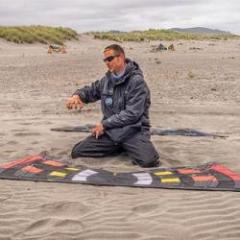



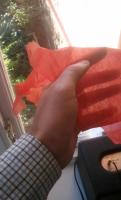

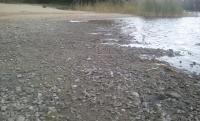
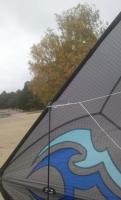
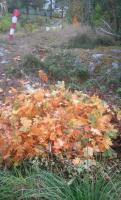



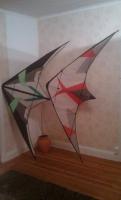
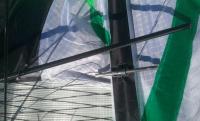



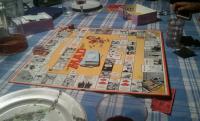
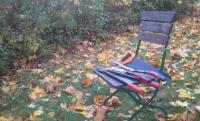


.thumb.jpg.53aabc63a639af8d375b2c92cf2e13f8.jpg)



